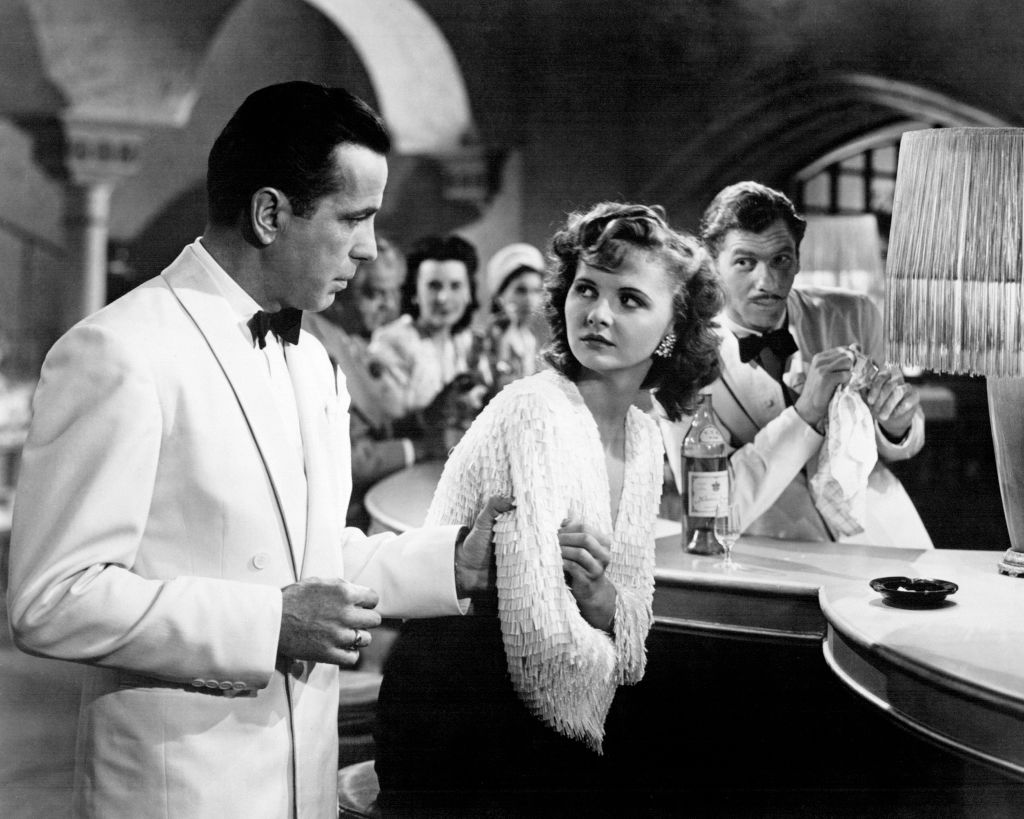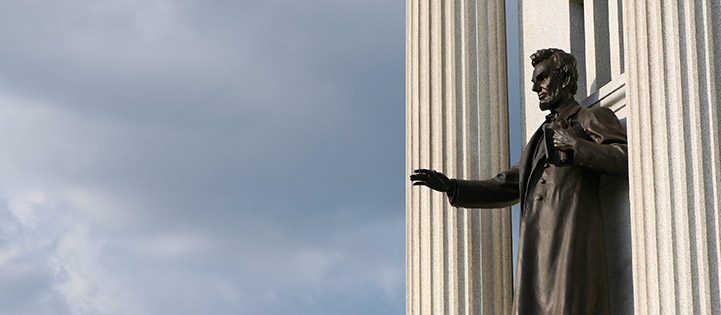How Abraham Lincoln created Thanksgiving.
God Blessed America

The greatest American film reminds us to give thanks that the cause of freedom remains there, waiting to be joined.
The beautiful 17-year-old actress Madeleine LeBeau fled Paris in June, 1940, just hours before the Germans marched in. The face of her Jewish husband, a celebrated film star in France, was featured on Nazi propaganda posters as a typical Jew. The rest of his family died in Nazi concentration camps. Like thousands of other refugees, they made their way to Lisbon, and from Lisbon, with forged visas and all the complications, uncertainties, and delays imaginable in wartime, they managed to make their way eventually to Hollywood. Two years later, still only 19, Madeleine LeBeau would play a memorable role in a pivotal scene in what would become one of the most well-loved movies ever made: Casablanca.
LeBeau and her husband both had parts in the movie and, in a sense, the movie was really about them and others like them. Warner Brothers purchased the story for Casablanca just a few weeks after Pearl Harbor. The film premiered on Thanksgiving Day 1942, just two weeks after the city of Casablanca in the real world had surrendered to American forces. The premiere was sold out and, after opening titles, the first thing the 1,500 people in the theater would see on the big screen was “a revolving globe,” which, as the script describes, “turns briefly into a contour map of Europe, then into a flat map. Superimposed over the map are scenes of refugees fleeing from all sections of Europe by foot, wagon, auto, and boat, and all converging upon one point on the tip of Africa—Casablanca.”
A narrator tells us in a voiceover:
With the coming of the Second World War, many eyes in imprisoned Europe turned hopefully, or desperately, toward the freedom of the Americas. Lisbon became the great embarkation point. But not everybody could get to Lisbon directly, and so, a tortuous, roundabout refugee trail sprang up. Paris to Marseilles, across the Mediterranean to Oran, then by train, or auto, or foot, across the rim of Africa to Casablanca in French Morocco. Here, the fortunate ones, through money, or influence, or luck, might obtain exit visas and scurry to Lisbon, and from Lisbon to the New World. But the others wait in Casablanca – and wait – and wait – and wait.
And while they were waiting they would inevitably make their way to Rick’s Café Americain, a gin joint whose owner, Richard Blaine, played by Humphrey Bogart, is an American expatriate with a mysterious past, who presents himself to the world as a cynic, but who underneath his cool exterior is a man of honor who might, if you were the most beautiful woman in Casablanca or the greatest resistance fighter in Europe, risk everything to obtain for you an illegal letter of transit so that you could escape Casablanca to Lisbon, and to the New World to continue the fight for freedom.
In the film, if you pay attention, it’s the first week of December, 1941. America is far away and seemingly asleep. But here in the Vichy-controlled African port city of Casablanca, the grim reality of Nazi tyranny casts its shadow over everything. The emotional turning point of the film is a scene in Rick’s Café, where Nazi officers begin singing the German patriotic song Die Wacht am Rhine, whereupon the Czech resistance leader Victor Laszlo, played by Paul Henreid, orders with Rick’s approval the house band to strike up La Marseillaise, the French national anthem.
The most stirring part of the scene is played by LeBeau, the young French girl we know as Yvonne, who stands up to join in the song. We have seen her, having been spurned by Rick, coming into the bar on the arm of a German officer, an act of treachery during those times that was common and would be severely punished after the war. But now we see her showing her true colors, standing up for her country and its cause. This is where her true loyalty lies. Tears are streaming down her face as she cries, “Vive la France!” and “Vive la démocratie!”
And she wasn’t the only one with tears streaming down her face. One of the American born actors, who played the doorman Abdul at Rick’s Café, noticed many of his fellow actors shedding real tears during that scene, and recalled, “I suddenly realized that they were all real refugees.”
Almost all of the 75 actors and actresses cast in Casablanca were immigrants, refugees from more than 30 different countries, most of them in war-torn Europe. Of the 14 actors given screen credit, only three were born in the United States. The living experience of Nazi tyranny, and the living experience of the fight for freedom were overwhelmingly present on the studio set in Burbank, California. Their own living experience of Nazi tyranny and of the fight for freedom that was still going on and was still uncertain, made those scenes overwhelming in their effects on the souls of those refugees. They are singing and weeping with souls full of defiance for tyranny and resolution on behalf of the cause of freedom.
The Russian born actor Leonid Kinskey played the bartender who was smitten by Yvonne’s charms and found himself saying deferentially, but more than once, “Yvonne, I love you.” Three decades after the performance of this scene, he recalled, “I think it was the most moving patriotic scene ever played in any picture.” And Madeleine LeBeau as Yvonne is the soul of the scene.
The film gained meaning over the decades after it was released. It became the way in which generations remembered what was at stake in that war and all the complexities involved in it: the failures, the compromises, the choices, the heroism, the cause. Because of the art of the film, millions of moviegoers in coming generations experienced these scenes with the same depth of feeling as those who had experienced tyranny and the fight for freedom in person. Good art helps us respond commensurately to the world as it really is, a fight for love and glory, a case of do or die. In the real world as it always is, the cause of freedom is there, waiting to be joined.
Lebeau would live for over 70 years after appearing in Casablanca, but the world remembers her for her role in one brief scene in that film, when she was just 19, and for that, she will be remembered as long as films are remembered. She died in 2016, at the age of 92, and seems to have been the last surviving Casablanca cast member. In an official announcement, the French culture minister said, “She will forever be the face of the French resistance.” Like eminent Frenchmen before her, she will now forever be remembered for and associated with the cause of freedom that has been shared by France and America and is the greatest glory of both countries—a cause that is an eternal reason for Thanksgiving.
The American Mind presents a range of perspectives. Views are writers’ own and do not necessarily represent those of The Claremont Institute.
The American Mind is a publication of the Claremont Institute, a non-profit 501(c)(3) organization, dedicated to restoring the principles of the American Founding to their rightful, preeminent authority in our national life. Interested in supporting our work? Gifts to the Claremont Institute are tax-deductible.

